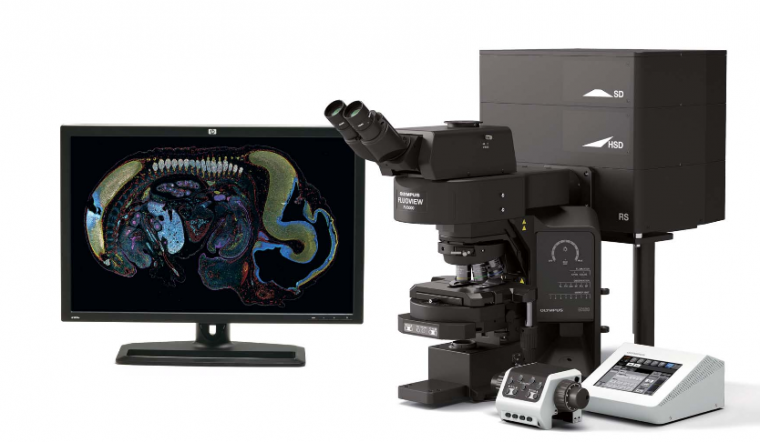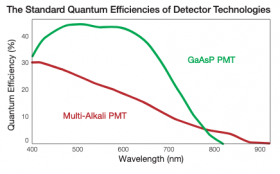
FLUOVIEW FV3000 Laser Scanning Microscope

With Olympus’ renowned optics at the heart of the system, the FV3000 features a new spectral detection concept for true multichannel spectral imaging with high sensitivity detection in multiple dynamic ranges, so even dim signals can be separated. The precision of galvanometer scanning is combined with the speed of resonant scanning in the FV3000RS hybrid scanner so users can combine precision and high-speed imaging in one experiment. The optical path enables macro to micro imaging from 1.25X to 150X magnifi cation, enabling users to easily observe fi ne detail within the overall context of the tissue.
New Generation FLUOVIEW for the next Revolution in science
Built for long service life and low operating costs, the FV3000 uses long-lasting all diode lasers and LED illumination. The system features a modular, upgradable design that includes 2-tier detection options, easily upgradeable laser confi gurations, and the stable and fl exible IX83 or BX63LF microscopes. With user-savable and selectable software workfl ows, the system adjusts to individual needs. The facility manager tracking software makes it easy to track system usage by user, making the FV3000 the ideal confocal system for years of productive science in single and multi-user environments
High Sensitivity Multi-Channel Imaging

A Fully Spectral System with Sensitivity and Accuracy
The FV3000 series employs Olympus’ TruSpectral detection technology. Based on patented* Volume Phase Hologram (VPH) transmission and an adjustable slit to control light, the spectral detection is highly effi cient, enabling users to select the detection wavelength of each individual channel to 2 nm

High-Sensitivity Spectral Detector (HSD) with GaAsP Photomultiplier Tubes Enhances Quantum Efficiency
The GaAsP PMTs in the FV3000's high sensitivity detector enable users to view samples whose emission is too weak to view with conventional detection methods. The GaAsP PMT unit incorporates two channels with a maximum quantum effi ciency of 45%, and Peltier cooling that reduces background noise by 20% for high S/N ratio images under very low excitation light
Spectral Unmixing
The deconvolution algorithm enables overlapping spectra to be separated based on the spectral information from lambda stack images. The fl uorescence cross-talk between the channels can be eliminated by the unmixing algorithm during both image acquisition and post acquisition processing




